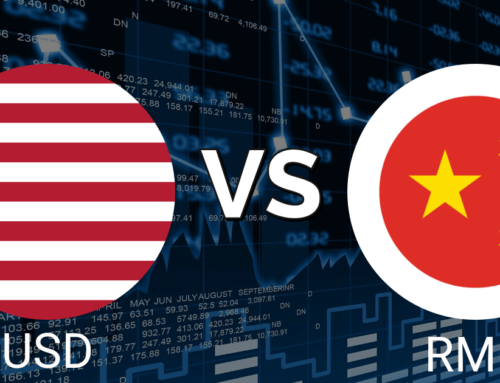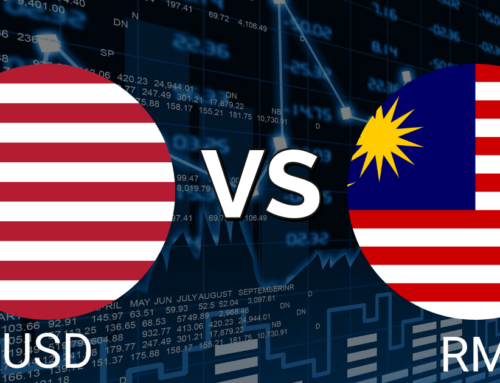
You may find this hard to believe, but USD and RUB are not the most popular currencies in the world. The U.S. Dollar has been the world’s reserve currency since 1944, when it replaced Sterling. The Russian Ruble came into existence in the early 19th century. It was worth more than the Dollar until 1979, when two notable things happened. First, Russia defaulted on its debt and, second, the Ruble was freed from the Dollar peg.
About Ruble
The Russian ruble is the name of Russia’s currency. The ruble, which dates back to the 14th century, is second only to the sterling pound in terms of age. It was decimalized in 1704, when the ruble was equal to 100 kopeks.
The Russian ruble is made in Moscow’s state-owned mint, which began operating shortly before the conclusion of World War I. Both the Kremlin and St. Petersburg Mint produce coins. The russian ruble has no official symbol, although the term “rubles” (or “рубли”) is sometimes used to refer to it. Py6 (three Cyrillic characters equal to RUB in Russian) is currently employed to designate the currency.
History of Ruble
The Russian ruble has a five-century history, and we’ve put it all together in one post. The country’s long trek to modernize its monetary system and secure a stable currency is illustrated, as well as the ruble’s purchasing power over the last 500 years compared with the US dollar according to Russia Beyond. 100 copper rubles in 1666 would get you pretty much anything. What can 100 Soviet rubles buy you in the 1920s?
Silver Ruble at 1534
The first Russian monetary system emerged as a result of a young Lithuanian princess, Elena Glinskaya, who led the state in the 1530s. Russia was then dealing with an economic crisis brought on by the absence of a national currency and a market overrun with counterfeit money. The minting of coins that were more difficult to forge was ordered by Glinskaya, who established the silver ruble as Russia’s primary money.
Copper Ruble at 1662
In 1655, Czar Alexei Mikhailovich attempted to introduce a monetary reform in order to finance the Russo-Polish war that began in 1654 and continued until 1667. It was decided to take “money from the people on credit” and produce copper coins that could be exchanged for silver rubles at a later date.
The money used by civil servants (state employees) and archers was made of copper, and taxes were taken in silver. Because copper was readily produced, the new currency’s value fell seven times in two years owing to its ease of manufacture.
Following a strike, Nicholas II confiscated all copper currency and coined new coins from the metal. This triggered the Copper Riot of 1662, an insurrection in Moscow involving up to 10,000 Muscovites, mostly soldiers, archers, and peasants. The rebellion was crushed, and copper coins were taken out of circulation. However, only Peter the Great was able to stabilize the ruble after almost 40 years.
Paper Ruble at 1769
Russians were still paying bills solely in precious metals coins, which were expensive to produce, by the middle of the 18th century, when Europe already had a big network of bank and cash settlement using paper banknotes.
The first paper money, ‘bank notes,’ was introduced by Catherine the Great (the Great) to back her silver rubles. Russia, on the other hand, was not prepared for this innovation. People didn’t want to keep their money in banknotes, and they had no faith in paper currency. Furthermore, the government greatly increased banknote production each year, regardless of their real silver value. After Catherine’s death, all of these elements combined to create a severe financial crisis.
Golden Ruble at 1895
During the reign of the last Russian tsar, Nicholas II, finance minister Sergei Witte implemented one of Russia’s most successful monetary adjustments. Witte replaced the silver ruble with a gold one to end the depreciation of banknotes issued under Catherine and currency speculation. The reform gave Russia a strong convertible national currency and drove in foreign investment.
Soviet Ruble at 1924
The Russian currency experienced the most severe hyperinflation in its history after the monarchy was toppled in 1917. In only five years, the ruble fell by more than 50 million times.
The value of the ruble was profoundly affected by World War I. For example, in 1917 100 rubles could be exchanged for $9, but by 1923 that same amount was worth only $0.00004. To remedy the problem, the USSR introduced a new Soviet currency backed by gold in 1924 to preserve the situation.
The ruble was replaced by cards for bread, meat, and other essentials in 1956 when the new hard ruble collapsed after just six years. The card system was introduced four times throughout the Soviet period from 1917 to 1991 as a result of an acute food scarcity.
Oil Ruble at 1970-1990s
Only the state had the right to trade rubles for foreign money and acquire goods from foreign nations from 1931 onward, when the Soviet ruble was exclusively a private currency used only by individuals.
The share of oil and other energy sources in the Soviet Union’s total exports increased significantly as a result of the increase in world oil prices and production from the mid-1970s onward. By 1985, it had risen to a record 54%.
The USSR’s economy was becoming increasingly reliant on oil, which would become costly in 1985-1986, when falling oil prices affected the country’s foreign exchange revenues as well as the ruble. From 1990 onwards, all foreign currency earnings were used to repay the USSR’s foreign currency debt.
At the same time, as a result of the budgetary deficit, Russia’s ruble debt began to grow. All of this had an impact on the breakup of the USSR and the financial catastrophe that followed. The ruble fell victim to inflation and redenomination no fewer than four times in ten years.
Modern Russian Ruble
In October 2009, a new 10-ruble coin was released that featured optical security elements. Because there were no 10-ruble coins in circulation, the central bank was forced to suspend this and introduce new coins into use. Bimetallic commemorative coins of 10 rubles will be produced indefinitely.
The earliest Olympic memorial coins in circulation were 25 ruble cupronickel coins, which began circulating in 2011. Many tiny special edition coin denominations are still in use, including ones for national historic events and anniversaries.
In 2017, the Central Bank of Russia launched two new banknotes: 200 RUB and 2,000 RUB. In September 2016, a poll was conducted to choose the icons and cities for the new notes. The Bank of Russia conducted an online poll to determine the symbols. In February 2017, the Russian Central Bank unveiled the new icons.
USD News
- EUR/USD: Macro And Geopolitics Align For A Downside Breakout - Seeking Alphaon November 23, 2024 at 3:20 am
EUR/USD: Macro And Geopolitics Align For A Downside Breakout Seeking Alpha
- US Dollar Crushes Euro, Yen, Canadian Dollar, other Currencies as Fed Backpedals on Pace of Rate Cuts - WOLF STREETon November 22, 2024 at 11:37 pm
US Dollar Crushes Euro, Yen, Canadian Dollar, other Currencies as Fed Backpedals on Pace of Rate Cuts WOLF STREET
- Metal Machining Market to Expand by USD 18.43 Billion (2024-2028), Driven by Rising Demand in Oil and Gas Industry, Market Evolution Powered by AI - Technavio - Victoria Advocateon November 22, 2024 at 10:40 pm
Metal Machining Market to Expand by USD 18.43 Billion (2024-2028), Driven by Rising Demand in Oil and Gas Industry, Market Evolution Powered by AI - Technavio Victoria Advocate
- USD set for top-five showdown with NDSU in Vermillion - KELOLAND.comon November 22, 2024 at 10:39 pm
USD set for top-five showdown with NDSU in Vermillion KELOLAND.com
- Bitcoin Price: BTC Live Price Chart, Market Cap & News Today - CoinGecko Buzzon November 22, 2024 at 9:34 pm
Bitcoin Price: BTC Live Price Chart, Market Cap & News Today CoinGecko Buzz
RUB News
- Did Donald Trump Jr. Do Coke While Standing Next to President-Elect Trump? - Snopes.comon November 22, 2024 at 9:50 pm
Did Donald Trump Jr. Do Coke While Standing Next to President-Elect Trump? Snopes.com
- RUB: US sanctions more systemic banks – Commerzbank - FXStreeton November 22, 2024 at 11:33 am
RUB: US sanctions more systemic banks – Commerzbank FXStreet
- Jannik Sinner and Berrettini rub salt in USA's wounds after controversial Davis Cup snub - Expresson November 22, 2024 at 9:08 am
Jannik Sinner and Berrettini rub salt in USA's wounds after controversial Davis Cup snub Express
- King Charles shares traditional Maori nose rub greeting with activist as he launches environmental charity - LBCon November 21, 2024 at 7:24 pm
King Charles shares traditional Maori nose rub greeting with activist as he launches environmental charity LBC
- Record defence spending, pension cuts: Russia approves budget for 2025–2027 - Ukrainska Pravdaon November 21, 2024 at 6:32 pm
Record defence spending, pension cuts: Russia approves budget for 2025–2027 Ukrainska Pravda


